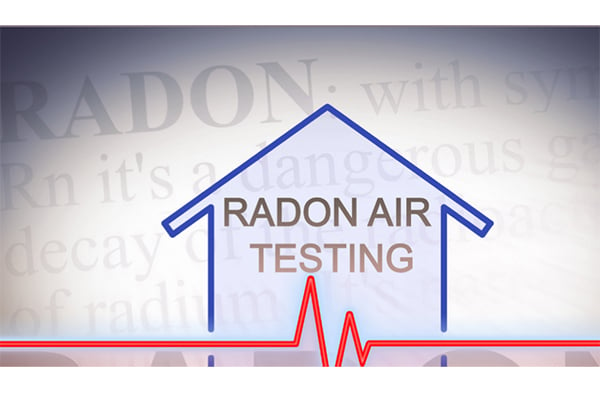
Taking care of our health is one of the most important things we can do. After all, health is wealth, right? One health threat that many Portland, Maine homeowners overlook is radon gas exposure. Even at low levels, radon can increase your risk of lung cancer. Since you can’t see, smell, or taste this radioactive gas, testing is the only way to know if radon is accumulating in dangerous levels inside your home.
As your health guardian, I’m here to explain exactly why Radon Testing in Portland Maine homes is so vital and what steps you need to take. Let’s dive in!
What Exactly is Radon?
Before we get into why testing is crucial, let’s make sure we all understand what radon actually is.
Radon is a radioactive gas that is formed from the natural breakdown of uranium in soil, rock, and water. It’s colorless, odorless, and tasteless. Radon enters homes and buildings through cracks and openings in concrete floors and walls. Since you can’t detect it with your senses, the gas can accumulate to dangerous levels without anyone realizing.
The Health Risks of Radon Exposure
Now that you know what radon is, let’s talk about why it’s a big deal from a health perspective. Radon exposure increases your risk of developing lung cancer – plain and simple. Radon gas emits radioactive particles that you inhale. These particles can damage lung tissue and cause lung cancer over time.
According to the Surgeon General, radon is the second leading cause of lung cancer in the United States today. The only substance that causes more lung cancer deaths is cigarette smoke. Radon claims approximately 21,000 lives in the U.S. alone every year.
When radon and cigarette smoke are combined, the risk grows even higher. For both smokers and non-smokers alike, reducing radon exposure should clearly be a top priority!
Why Portland Maine Homes Are at Risk
Now that you know how dangerous radon really is, you may be wondering why Portland homes, in particular, are susceptible.
Radon Testing in Portland Maine is crucial because our homes have two main risk factors:
- Granite Bedrock: The soil throughout most of Maine consists of granite bedrock, which contains trace uranium deposits. As this bedrock breaks down over time, it releases radon gas which can enter homes built on top.
- Cold Winters: Our long, cold winters mean Maine homes are well-sealed and insulated. This reduces air circulation, allowing radon to accumulate more easily once inside. Researchers have found that the more air-tight a home, the higher the indoor radon levels tend to measure.
When you combine an underlying geology that produces radon with homes more prone to trapping it inside, Portland residents clearly need to take this hazard seriously by testing!
Radon Test Kits: What You Need to Know
Now that I’ve hopefully convinced you that testing your Portland home for radon is important, let’s talk specifics.
If you want to test for radon, specialized test kits are available from home improvement stores, online retailers, and state radon offices. Luckily, testing is easy and affordable! Here are a few key things to understand about radon test kits:
- Short-Term vs. Long-Term: Both short-term and long-term test kits are available. Short term kits remain in your home from 2 to 90 days. Long term kits stay in place for more than 90 days to give a reading that accounts for radon fluctuations over time.
- Professional Assistance: While DIY radon test kits are simple to use, you can also hire a radon professional to handle testing and ensure procedures are followed correctly.
- Ideal Locations: Test kits should be placed in the lowest part of your home where people spend time. This might be a basement or first floor living room, for example.
Once the test kit is analyzed following the testing period, the lab will report back with your home’s radon level expressed in picocuries per liter (pCi/L). Let’s explore guidelines for understanding these test results next.
Radon Mitigation: Next Steps if Levels are High
If your Portland home tests over 4 pCi/L, don’t panic! Successfully lowering radon is a straightforward process in most cases when done properly. Here is an overview of what to expect with radon mitigation if your test came back high:
- Step 1 – Consult Mitigation Experts: Hire qualified radon mitigation contractors to design a custom reduction system for your home. Reputable companies use accredited technicians to ensure compliance and effectiveness.
- Step 2 – Install the Mitigation System: Trained professionals will install a radon extraction and ventilation system featuring PVC piping, an inline fan, and exterior exhaust. Systems can be active or passive and are tailored to your foundation type.
- Step 3 – Retest to Confirm: Once the system has run for 24 hours, retest your home’s radon levels in the same location to confirm mitigation success. If levels still exceed 4 pCi/L, the system design is tweaked until safe levels are achieved.
As you can see, radon mitigation is a well-defined process when radon test kit results make it necessary. Within a few weeks, homes can have long-term protection against dangerous radon accumulating where families spend their time.
Be Your Own Health Guardian Through Testing
As we wrap things up, I sincerely hope I’ve conveyed exactly why being your own health guardian via Radon Testing in Portland Maine homes is so essential. Don’t overlook this invisible health hazard!
Take control by testing your levels, carefully interpreting results, and if necessary, hiring ethical mitigation pros to install systems that keep your family safe. Both testing and mitigation are affordable investments in long-term wellbeing.
Empower yourself with knowledge and take action! Here’s to breathing easier knowing your home’s air quality is one less thing to worry about as we enjoy Maine living. Your lungs will thank you!

Tech Hub Digital, a one-stop destination for complete technology-related information.

